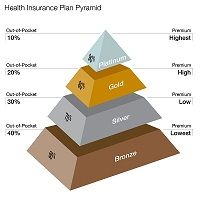What about a Cheaper "Tin" ACA Plan?
The ACA requires participating insurers to offer plans ranked by the quality and cost of their offerings. The cheapest is labeled bronze, then silver, gold, and platinum. Some policymakers have proposed creating a still cheaper plan that would protect someone from health care bankruptcy, but have high out-of-pocket costs for care.
(Click the play button on the audio player above to listen to this segment of the ACA panel discussion)
This HCPLive audio panel discussion features:
- Joel Zinberg MD, JD, Associate Clinical Professor of Surgery at Mount Sinai Hospital in New York City
- David Sandman PhD, Senior Vice President of the New York State Health Foundation
- Patrick Cronin, New Jersey organizing director for “Get Covered America” a nonprofit with a federal contract to help people sign up for coverage
- Tom Wilson (moderator), a partner at Kaufman Zita Group and former chairman of the NJ Republican State Committee
The panelists look at how well the ACA is working and discuss whether it is politically vulnerable.

The ACA requires participating insurers to offer plans ranked by the quality and cost of their offerings. The cheapest is labeled bronze, then silver, gold, and platinum. Some have proposed creating a still cheaper plan that would protect someone from health care bankruptcy, but have high out-of-pocket costs for care. Would that increase ACA enrollment?
Sandman says most people opt for a silver plan, and that such plans give good value. Cronin says price is important, but so is quality. Zinberg says that in NY, the bar has always been set high for what health insurance plans must cover but that under the ACA a bare-bones plan might be useful.
“You get what you pay for a copper or tin plan might be better than nothing, but you would very much be under-insured and still very vulnerable” Sandman says.
But Zinberg said the idea could work.
“A catastrophic plan really offers a very good way to insure people at a lower cost. . . particularly for younger people,” Zinberg says.